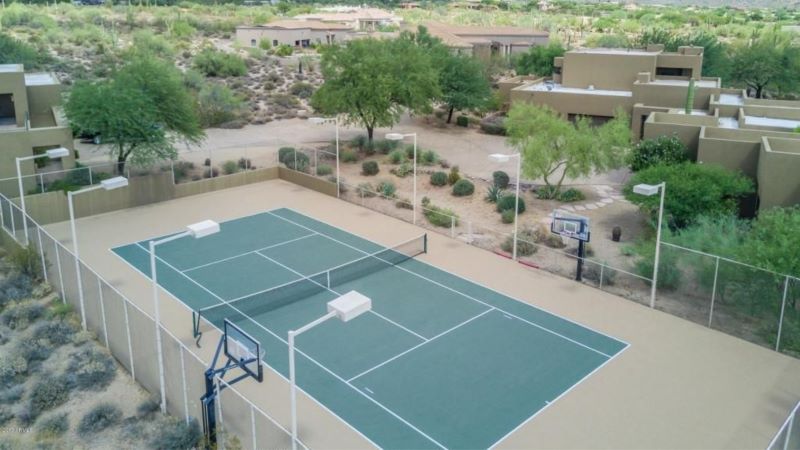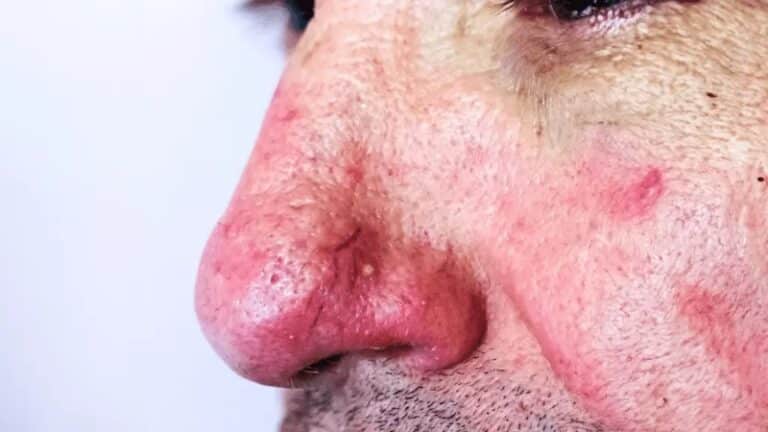“Alcoholic nose,” a term often used to describe a red, bulbous, and swollen nose, is actually a symptom of rhinophyma, a severe subtype of rosacea. While once thought to be caused by excessive alcohol consumption, studies show that only about 10% of rosacea sufferers develop rhinophyma, and alcohol is not the direct cause.
Rhinophyma occurs more commonly in men over 50, with research indicating that men are 12 to 30 times more likely to develop the condition than women. Though alcohol can exacerbate flushing, factors like genetics, skin inflammation, and enlarged oil glands play a bigger role in its progression.
Questions answered in this article:
Our Addiction Treatment Centers

Scottsdale Rehab
Luxury Personalized Rehab

HART Rehab
Holistic Luxury Personalized Rehab

Scottsdale Detox
Luxury Medical Detox
What is an Alcoholic Nose (Rhinophyma)?
An alcoholic nose, or rhinophyma, is a skin condition that causes the nose to become red, swollen, and bumpy. It is often linked to severe rosacea, a chronic skin disorder, rather than alcohol use itself, though drinking can make the symptoms worse.
Over time, thickened skin and enlarged oil glands can cause the nose to look misshapen. While the exact cause is unknown, genetics and untreated rosacea are major factors, and treatment may include medications, laser therapy, or surgery.
Does Alcohol Cause Rhinophyma?
Alcohol does not directly cause rhinophyma, the skin condition often called “alcoholic nose.” However, alcohol can worsen facial redness in people with rosacea, which may contribute to the misconception that heavy drinking causes the condition.
Rhinophyma develops due to long-term, untreated rosacea, leading to thickened skin and enlarged oil glands, especially on the nose. While alcohol may trigger flare-ups, factors like genetics, skin inflammation, and hormone changes play a much bigger role in its development.
What Does an Alcoholic Nose Look Like?
An alcoholic nose (rhinophyma) looks red, swollen, and bumpy, often with thickened skin. The nose may appear bulbous or deformed, and in severe cases, it can develop visible blood vessels and a rough texture.
As the condition worsens, the nose may grow larger and more uneven, sometimes with deep grooves or lumps. The skin can also turn purple or reddish, especially if there is increased blood flow or irritation.
What Are the Other Causes of Rhinophyma?
While rhinophyma is often linked to severe rosacea, other factors can also contribute to its development. These causes may include genetics, skin conditions, and lifestyle factors.
- Genetics: Some people may be more likely to develop rhinophyma due to family history. If close relatives have rosacea or thickened skin conditions, the risk may be higher.
- Untreated Rosacea: Long-term, untreated rosacea can lead to severe skin inflammation and thickening. Over time, this can cause permanent changes to the nose’s shape and texture.
- Excess Oil Production: Overactive oil glands in the skin can contribute to thickened and bumpy skin. This excess oil can lead to clogged pores and skin growth over time.
- Sun Exposure: Too much sun exposure can damage skin and worsen rosacea symptoms. Sunburn and heat can also increase redness and swelling in the nose.
- Hormonal Changes: Shifts in hormones can trigger or worsen skin conditions like rosacea. These changes may lead to more inflammation and skin thickening over time.
- Weakened Immune System: A weak immune system may make the skin more prone to chronic inflammation. This can result in more severe skin reactions and thickening of the nose.
Treatment for Rhinophyma
Rhinophyma can be managed with different treatments depending on its severity. Options include medications, laser therapy, and surgery to improve both appearance and skin health.
- Medications: Doctors may prescribe antibiotics or anti-inflammatory medications to reduce swelling and redness. These can help control rosacea symptoms and prevent rhinophyma from worsening.
- Laser Therapy: Laser treatments use focused light to remove excess tissue and smooth the skin. This can reduce redness, bumps, and thickened areas on the nose.
- Dermabrasion: Dermabrasion is a procedure that removes the outer layers of skin to improve texture. It helps make the nose look smoother and evener over time.
- Electrosurgery: This treatment uses electric currents to remove excess tissue and reshape the nose. It can also help seal blood vessels to reduce redness and swelling.
- Surgical Removal: For severe cases, doctors may perform surgical reshaping to remove thickened skin. This helps restore a more natural nose shape and function.
- Skincare and Lifestyle Changes: Using gentle skincare products and avoiding triggers like alcohol or spicy foods can help. Protecting the skin from sun exposure and irritation can also prevent flare-ups.


